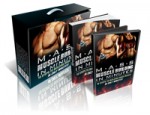 License Type: Giveaway Rights
License Type: Giveaway Rights  File Size: 3,070 KB
File Size: 3,070 KB File Type: ZIP
File Type: ZIP
 SKU: 12866
SKU: 12866  Shipping: Online Download
Shipping: Online Download
Ebook Sample Content Preview:
When you run paid traffic campaigns, it is important to run them with a plan. Obviously running your campaigns at a higher daily budget will make it possible to pay for more clicks, but if you’re paying for clicks that aren’t amounting to anything, you’re not going to get anywhere. If you’re not getting a decent ROI, then the money you’re investing becomes a waste. To ensure your campaigns are profitable, you should be engaging in split testing to see which copy/design converts better, and you should be tracking your results. Only when you start seeing good results, should you consider increasing your budget to increase exposure.
Split Testing
Split testing, also known as A/B testing, is a method of testing what works better for your business. For websites, it splits the traffic in half, sending part of the traffic to one or more variants of the pages in the site, and sending the other half to a different variation. This helps you to see how people are behaving, and determine whether the copy/design elements/placement of certain things works better on one option vs. another.
You can do this with your ads, by slightly varying your ad copy for one set of keywords and using a different variation for another set of keywords. Then, you can set the landing pages for each ad to be slightly different version of each other, so you can see which set of keywords is doing better for which landing page. Then, you can switch them around to determine whether it is the ad copy, the keywords, or the landing page that is affecting conversion rates.
You can do split testing with one variation at a time to make it easier to see what is making the impact, or you can do multivariate testing to determine the best possible combination within a shorter amount of time. However, with multivariate testing, you need a considerable amount of website traffic to get accurate results.
For those starting out, run two landing pages across the same ads. Then, run the same two landing pages against a different set of ads. Look at website analytics to determine what did better. Run the landing page that did the best with the opposite ads. Did it still perform well? If not, it’s the ad. If so, then it’s the landing page.








